Carlos Glass 1
Listen
to Carlos Glass
1
Carlos Glass 1 is a short example demonstrating DYNAMIC MODULATION. It means live modulation changes during performance transposing the anchor to the pitch and key of a note in the original scale. The scale used for this piece is the so called Carlos Harmonic (1/1, 17/16, 9/8, 19/16, 5/4, 21/16, 11/8, 3/2, 13/8, 27/16, 7/4, 15/8). The scale is some sort of Just Intonation scale so it is not symmetrical and that means that once you start shifting anchor note you get all kinds of unusual intervals.
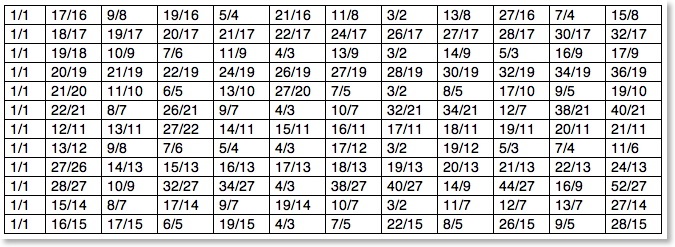
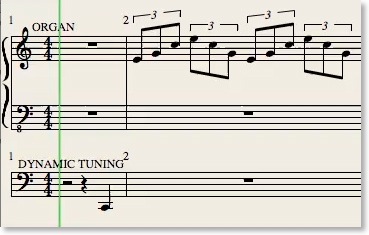
(click on the image to watch the movie)
Watch the above movie: from bar 2 to bar 14 and from bar 22 to the end, I play the same C major arpeggio but what we hear is something else depending on the selected anchor note that is visible on the lowest staff (the bass notes, played by the left hand, are there simply to accentuate the 'whirling' effect). If I were an organ player maybe I could manage to play everything in real time, using a pedalboard to modulate, but I am not.
LMSO handles DYNAMIC MODULATION:
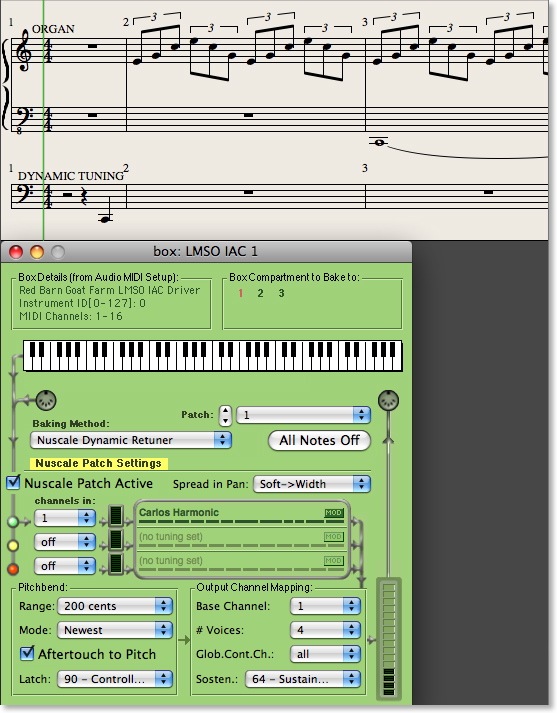
(click on the image to watch the movie)
Watch the above movie looking at the scrolling score and LMSO IAC1 box, you will see that (having Dynamic modulation enabled, see below) once a note is played on the selected range, that one is used to modulate the anchor note.
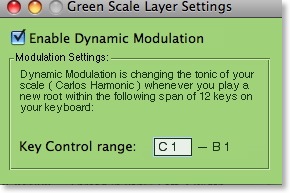
Notes are sent to and played by 4 monophonic instances of EXS24 (Logic Pro's sampler).
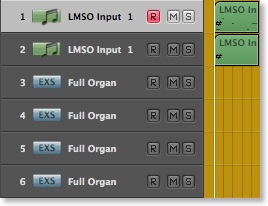
Each one on a different midi channel. Midi data from LMSO is split with a channel splitter. I use 'alias' objects to keep the original ones on the 'mixer' page (see below).
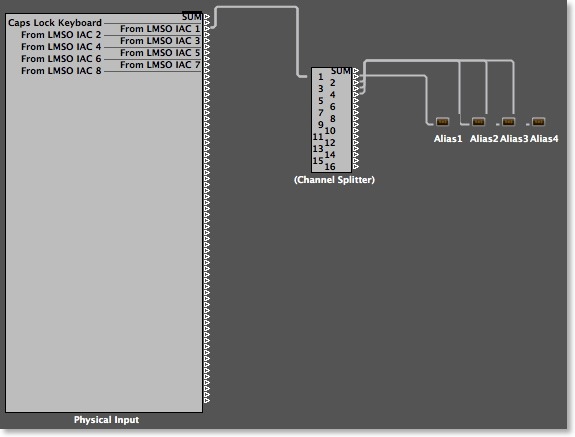
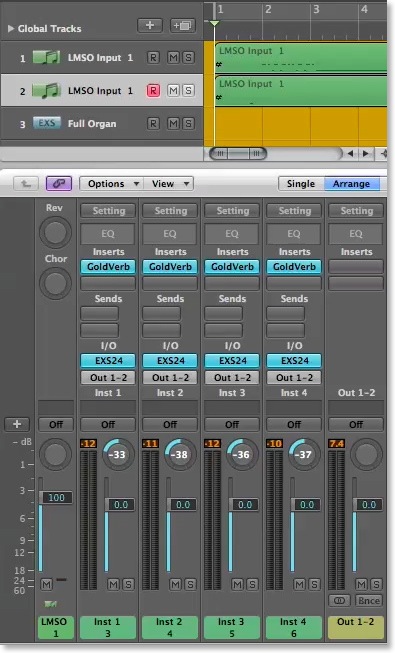
(click on the image to watch the movie)
Watch the above movie and see pan position modulated by midi velocity!
(this short movie is mono, to hear dynamic panning listen to the .mp3 file)
Carlos Glass 1 is a short example demonstrating DYNAMIC MODULATION. It means live modulation changes during performance transposing the anchor to the pitch and key of a note in the original scale. The scale used for this piece is the so called Carlos Harmonic (1/1, 17/16, 9/8, 19/16, 5/4, 21/16, 11/8, 3/2, 13/8, 27/16, 7/4, 15/8). The scale is some sort of Just Intonation scale so it is not symmetrical and that means that once you start shifting anchor note you get all kinds of unusual intervals.


(click on the image to watch the movie)
Watch the above movie: from bar 2 to bar 14 and from bar 22 to the end, I play the same C major arpeggio but what we hear is something else depending on the selected anchor note that is visible on the lowest staff (the bass notes, played by the left hand, are there simply to accentuate the 'whirling' effect). If I were an organ player maybe I could manage to play everything in real time, using a pedalboard to modulate, but I am not.
LMSO handles DYNAMIC MODULATION:

(click on the image to watch the movie)
Watch the above movie looking at the scrolling score and LMSO IAC1 box, you will see that (having Dynamic modulation enabled, see below) once a note is played on the selected range, that one is used to modulate the anchor note.

Notes are sent to and played by 4 monophonic instances of EXS24 (Logic Pro's sampler).

Each one on a different midi channel. Midi data from LMSO is split with a channel splitter. I use 'alias' objects to keep the original ones on the 'mixer' page (see below).


(click on the image to watch the movie)
Watch the above movie and see pan position modulated by midi velocity!
(this short movie is mono, to hear dynamic panning listen to the .mp3 file)


